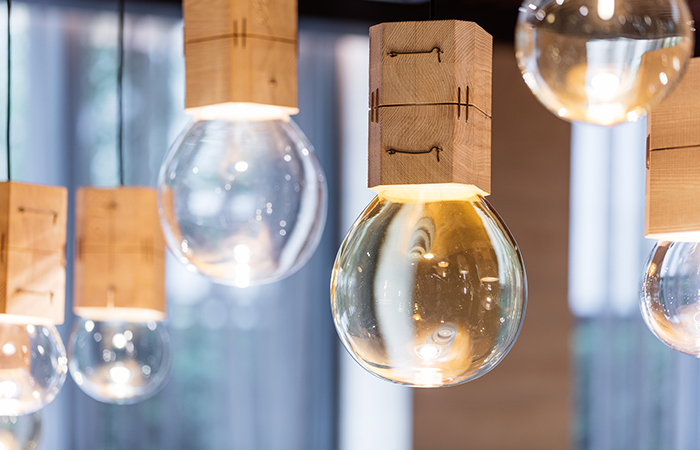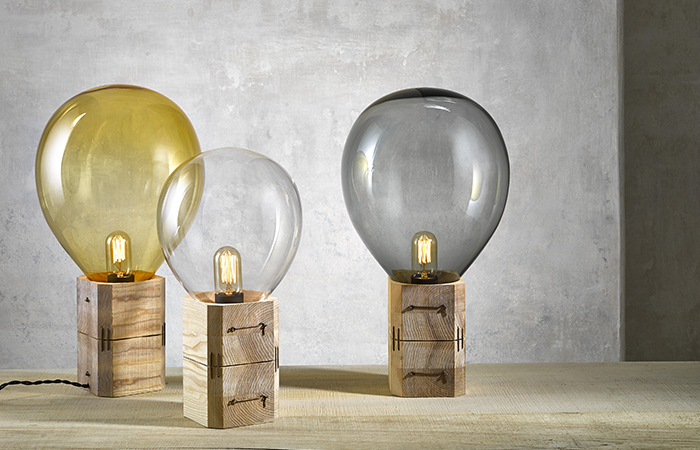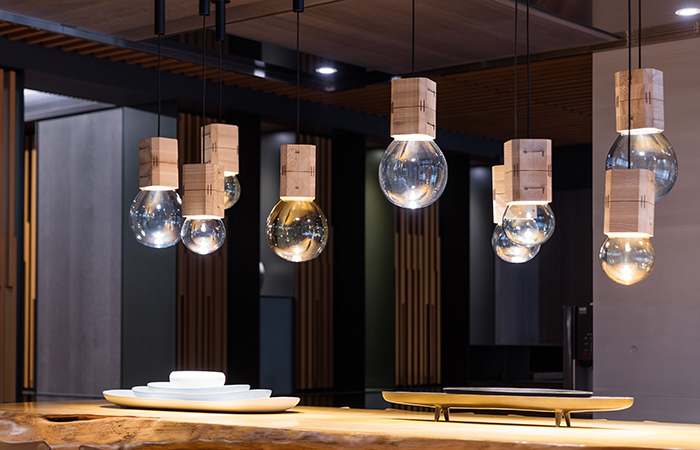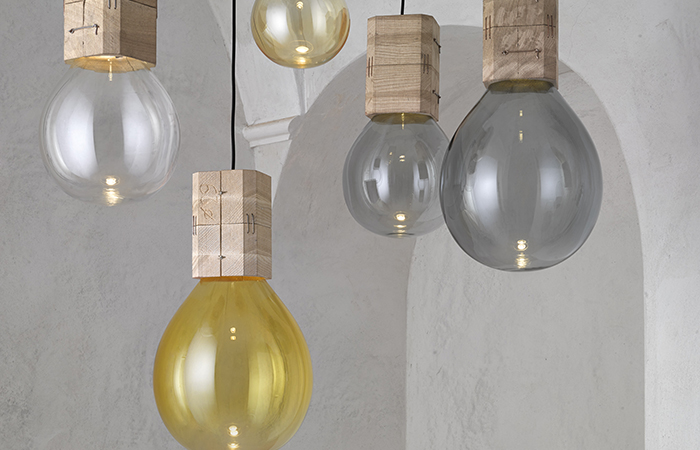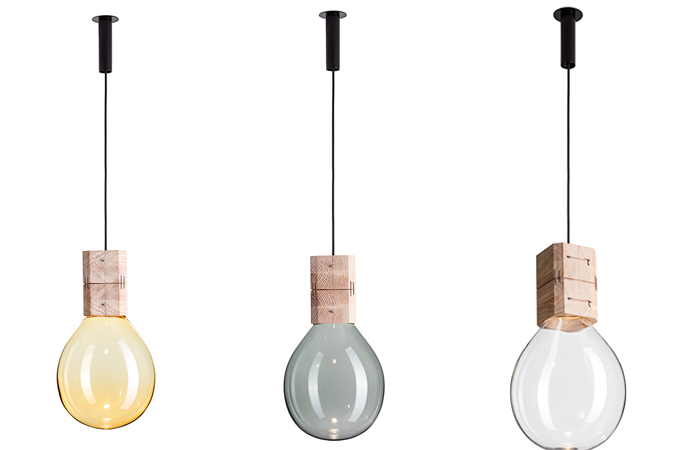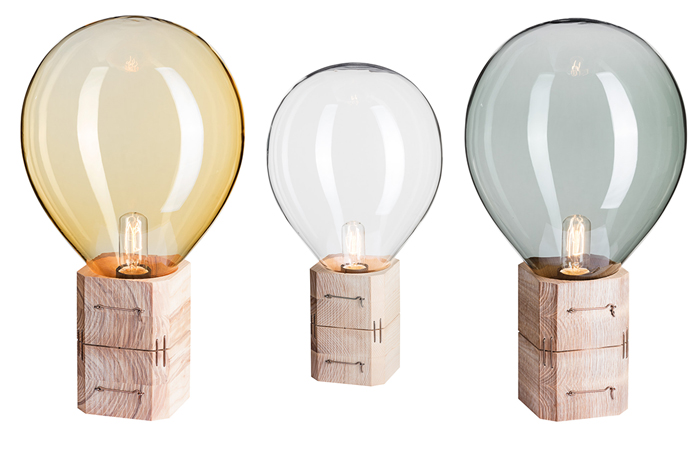Magic with Molten Glass and Moulds
In honour of this month’s themes of process and wood, BCFA member Lasvit have allowed us to explore the process behind making of their lighting – without wood you would not have the amazing collections Lasvit offers today. We also show you their Moulds collection by Jan Plecháč and Henry Wielgus, a perfect example of the wooden form required to make their stunning designs. Make sure you read on to see these beautiful moulds come to life!
Magic with molten glass
Glass separates your palms from your champagne, it lets your fingertips swipe through memories. It has the power to shape light, enable your eyes to observe atoms and stars. There’s an impressive history of glassmaking in Europe. While many glassmakers were forced to close down, the craftsmanship in Northern Bohemia is constantly thriving. The respected know-how has been handed down for over 1000 years in a region that can pride itself with the second longest history in the industry. Students can become apprentices of the craft as soon as they turn fifteen years of age. All the special techniques, tricks and practices are handed down from the masters, together with the local identity. To get the magic just right, you need to grow up with it and practice your entire life. In the end you become the magic itself.
The heart of the whole glassworks is the melting furnace made of fireclay, a material which has been used for building furnaces since time immemorial. It was the ancient Phoenicians who were the first to acquaint the world with the wonders of hand-blown glass. Molten glass is stiff, non-homogenous, and opaque. Glassblowers have to move like dancers to shape it. A few precise movements do the trick. Men must move in perfect synchronization which results in a fascinating choreographic show. Glassblowers use a pipe to blow the air into the glass with all their skills and strength while rotating the blob. The bubble grows like a balloon inside the glassworks. In the end, a wooden form gives it its final shape.
Carving the wooden forms is a major part of the manufacturing process. Each part of the production origins in the region – from all the raw materials to trees used for the moulds. The local forests surrounding the glassworks in Northern Bohemia are used for several purposes. Whole logs are soaked in water and moved into the glassworks where they fill up a whole room that is vital for any glassmaking endeavour. Each form is carved and prepared according to a specific sketch. The new form is clean, light, and has a visible wood pattern. The moment the molten glass touches the surface of the mould, it leaves a black charred crust. There is something naturally balanced in this process. The wooden form is being slowly destroyed while glass is born. The burned-wood texture in combination with water is what gives glass its smooth surface. Glass expands in the mould and precisely mirrors the shape and structure of the form.
Glass is an honourable teacher and a shining celebrity at the same time. Glassblowers have to master all its manners and handle it with respect. A sudden change of temperature may cause it to strain and crack. It´s not just about breathing life into a product, it´s also an exercise in dexterity, strength, patience, and precision. The cooling down process can take hours, days, and sometimes even weeks.
Artisans can set their imagination free and choose from a number of decorating techniques. Glass can be sanded or painted, but above all it can be cut. This is a discipline mastered by Czech craftsmen through intricate geometric ornaments imprinted into glass – which is known as the Bohemian Crystal. This surface reflects light better than diamonds performing their little dance. Look and get carried away by the music conducted by glass.
Product Focus: Moulds by Jan Plechac & Henry Wielgus
Jan Plechac and Henry Wielgus met during their studies at The Academy of Art, Architecture and Design in Prague, where they first collaborated. Plechac exhibited his thesis work at Salone Satellite 2011, gaining much attention from gallery owners and well-known producers. Wielgus did further studies at the Escola de Disseny and Art in Barcelona. He has been active in many international design shows. In 2007 he founded the DesignSUPERMARKET festival. In 2012, Jan and Henry founded Studio Jan Plechac & Henry Wielgus.
Moulds is a collection of suspended lights, showcasing Czech crystal at its most resilient and lively form. The series capture a specific moment when molten glass resists its expected shape and freely escapes from the mould as a random, amorphous bubble. The energizing effect of this series arises from the contrast of materials, using the traditional craft techniques of blowing crystal glass into a beech form. The Moulds collection brings powerful emotions into an interior. The composition of varied ‘overblown’ shapes creates a particularly striking visual effect. Integrated LED light sources were set directly within the charred form, creating an impression that the heat and energy of the glassmaker’s kiln remained inside, in historic reference to the art of Czech glassmakers.
Moulds come in all shapes and sizes, tailoring well to your specific project needs.
Hand Blown Glass:
- Small: diameter 180x350mm, GU 10 max 40W light source, 3kg weight.
- Medium: diameter 230x420mm, GU 11 max 40W light source, 4kg weight.
- Large: diameter 290x520mm, GU 12 max 40W light source, 6kg weight.
Hand-blown glass, hand-steel and wood:
- Table Lamp Medium: diameter 230 x H 420mm, Edison bulb E27 light source, 5kg weight.
- Table Lamp Large: diameter 286 x H 520mm, Edison bulb E27 light source, 7kg weight
If the process of creating these lights inspires you, or you have found the Moulds collection suited to your project needs, why not contact Lasvit? One of their bestsellers, Neverending Glory, is now available in different sizes, so why not explore Design Insider’s articles written on Lasvit?
Contact Lasvit





